
First Nordic Drills 1.94 g/t Au over 21.5 m and 5.45 g/t Au over 4.6 m at Aida and Extends Gold Mineralization to over 2 km
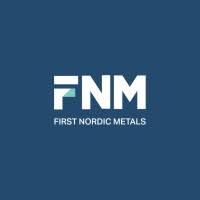
First Nordic Metals Corp. (TSX-V: FNM) (FNSE: FNMC SDB) (OTCQB: FNMCF) (FRA: HEG0) is pleased to announce results to date (14 of 39 holes) from its 2025 diamond drill program at the Aida target located within the Company’s 100%-owned Paubäcken project, in Västerbotten County, northern Sweden.
Key Highlights:
- Multiple strong gold intercepts returned, including: 1.94 g/t Au over 21.5 m (2025-AID-038), 5.45 g/t Au over 4.6 m (2025-AID-030), and 1.17 g/t Au over 17.5 m (2025-AID-027)
- Gold-mineralized strike of Aida corridor extended from 0.5 km to over 2.1 km, remaining open in all directions
- Several new gold bearing structures identified, including the blind to surface Pharao Zone and the Northern Mafic Zone
- Gold bearing structures intercepted in 12 of 14 drill holes to date with visible gold identified in 5 drill holes
- Follow up drill program being planned for 4Q25
Taj Singh, CEO of FNM, comments: “We are encouraged by this first batch of results, with notable grade-width combinations seen in many of the gold intercepts. The identification of multiple parallel mineralized zones adjacent to the Central Zone (original discovery) is particularly compelling; not only does it build on cumulative strike length, but any future development could potentially be shared across the zones. The area around the Central Zone remains the only part of Aida with meaningful drill density; significant potential exists to both the north and south, and even with wide-spaced step-outs of up to 500 m apart, we intercepted gold mineralization in every hole along the main corridor. With assays pending from 25 additional holes, we are only beginning to outline the scale of this system.”
Discussion of Results
The 2025 Aida drill program was designed to systematically expand known mineralization within the Aida structural corridor along strike to the north and south, and at depth. The program comprised 39 diamond drill holes totaling 10,304 meters (“m”) (see Figure 1, Appendix). Due to delays at the preparation and assay laboratories, results from 14 of the 39 drill holes have been received to date. Gold bearing structures have been intercepted in 12 of the 14 drill holes (using a 0.1 g/t cutoff to define mineralized structures, not for reporting significant intercepts), with visible gold identified in 5 drill holes.
Widely spaced drill fences were designed to test the southern extent of the target corridor, where thick glacial till cover prevented base-of-till drilling to reach bedrock, and the northern extent of the structural corridor. In the central area, deeper drill holes were designed to test the down dip extension of previously identified mineralization. The 2025 drill program has successfully extended mineralization along the Aida structural corridor 4x to over 2.1 km in strike, up to 250 m deep in the central area, and discovered a previously unknown blind to surface zone (“Pharao Zone”), east of the Central Zone.
The Aida structural corridor is a broad, anastomosing, complex network of structures interpreted to be a second order splay off the first order Gold Line structure. Gold mineralization intercepted along the structural corridor is hosted primarily within the sheared margins of mafic volcanic units, with minor mineralization hosted within subordinate volcaniclastic and greywacke units. Hanging wall and footwall lithologies are dominated by black schist units that are unmineralized. Encouragingly, two styles of mineralization within the system have been observed as hosts in different lithologies. All significant mineralization encountered so far within the mafic volcanic units is associated with intense shearing and calc-silicate hydrothermal alteration consisting of diopside, grunerite, hornblende and other accessory minerals. Mineralization encountered in the southern extension area is hosted within quartz-carbonate veins with arsenopyrite.
Three new zones of mineralization have been identified within the structural corridor: two new parallel zones to the east of the Central Zone (including the Pharao Zone), and one in the northern extension area (Northern Mafic Zone). The Pharao Zone is blind to surface, has a true width of 40 m and has been traced for 250 m in drilling. The new zones are open in all directions and will be targeted in follow up drill campaigns.
Select intercepts from 2025 drill holes received to date include (all intercepts are calculated using 3 m of 0.3 g/t as a cutoff and are drilled thickness):
- Drill hole 2025-AID-038, oriented west to east in the Central Zone, intersected 21.5 m at 1.94 g/t Au on the western contact of the main Aida shear, 7.0 m at 1.30 g/t Au on the eastern contact of the main Aida shear, and 6.7 m at 1.45 g/t Au in the newly identified Pharao Zone. Gold is associated with arsenopyrite and pyrrhotite mineralization and calc-silicate alteration (See Figure 2, Appendix)
- Drill hole 2025-AID-030, drilled in the northern extension, intersected 4.6 m at 5.45 g/t Au within the newly identified Northern Mafic Zone, parallel to the main Aida structural corridor. Gold is associated with arsenopyrite and pyrrhotite mineralization and calc-silicate alteration (See Figure 4, Appendix)
- Drill hole 2025-AID-027, drilled in the central Aida area, intersected 17.5 m at 1.17 g/t Au within the newly identified Pharao Zone. Gold is associated with arsenopyrite and pyrrhotite mineralization and calc-silicate alteration (See Figure 3, Appendix)
- Visible gold was identified in drill holes 2025-AID-001, 002, 005, 019 and 030 (results in Appendix below) along the strike of the mineralized corridor
The results continue to demonstrate the potential of the Aida target as a set of several significant gold bearing structures spanning multiple kilometers. Mineralized zones have now been identified to be hosted in multiple parallel units, some of which are blind to surface, and hosted by different lithologies. Strong deformation and broad alteration zones along sheared contacts with metavolcanic and minor volcaniclastic and greywacke units are associated with mineralization and indicate the presence of a large-scale orogenic gold system. All zones identified to date remain open in all directions and more than 2 km of the structural corridor target remain untested by drilling. Once the complete 2025 drill results have been received and modelled, follow up work programs will be designed.
A table of all drill hole information and significant intercepts can be found in Tables 1 and 2 in the Appendix below.
About the Aida Target
The Aida Target is located 40 km south of the Company’s resource-stage Barsele project (in joint venture with Agnico Eagle Mines Limited), and 4 km northeast of the operating Svartliden mill that is currently processing ore from Sweden’s newest gold mine, Fäbodtjärn (owned and operated by Botnia Exploration AB).
The Aida target is a +4 km structural trend within the regional Gold Line structural corridor, close to the junction between the Svartliden shear zone to the southwest (historic high-grade gold mine) and the Gold Line main shear corridor. Located under ~3-20 m of glacial till cover, the structural corridor was first identified in a regional top of bedrock drilling program in 2021. Litho-structural modelling of magnetic geophysical data interpreted the structural corridor as a second order splay structure off the regional first order Gold Line belt structure.
Mineralization along the Aida structural corridor is hosted within highly sheared and hydrothermally altered mafic volcanics and greywacke, surrounded by black schist metasedimentary units and appears to be controlled by rheological contrast between lithologies and flexures and intersections within the structural corridor. The abundant drill discoveries of auriferous host units through the challengingly thick glacial cover shows the true potential of the area.
Two previous drilling campaigns completed in 2021 and 2022 tested approximately 1 km of the structure and successfully intercepted gold mineralization, including 22.5 m of 2.4 g/t Au in PAU21003. In 2023, follow up base-of-till / top-of-bedrock (“BoT/ToB”) drilling successfully expanded the mineralized footprint to the north and south along the structure to 1.5 km, including the highest BoT/ToB result to date on the Project of 5.01 g/t Au. A total of only 1,492 m of diamond drilling has historically been done by FNM at Aida.
About the Paubäcken Project
The Paubäcken Project consists of four licenses covering 19,737 hectares that cover the central part of an emerging district in north central Sweden known as the “Gold Line belt”. The Gold Line belt is host to several significant gold deposits, including the Company’s Barsele project, as well as the Svartliden gold mine and mill complex and Fäboliden development project (both operated by Dragon Mining Ltd.). The Svartliden mill is currently processing gold ores from the Fäbodtjärn gold mine, which started mining operations in 2024.
The Paubäcken project is strategically positioned between Barsele and Fäboliden, and 5 km northeast of the Svartliden mine, within the Gold Line belt in northern Sweden. The Project is host to 22 km of the regionally significant “Gold Line” structure which can be traced for over 200 km in regional geophysics data. The Gold Line was first recognized in the late 1970s as a large arsenic-in-soil anomaly formed by a regional fault. All mineralization discovered to date shows a spatial relationship to this structural corridor, occurring either in the main shear corridor or on perpendicular structures within a few km of the main structures. The geology of the Paubäcken project consists of a sequence of inverted basin sediments and mafic volcanic rocks intruded by small syn-kinematic granitic intrusions within a broad, anastomosing high strain structural corridor. The rocks are regionally metamorphosed to amphibolite facies and gold mineralization is associated with intense biotite, and calc-silicate alteration assemblages and sulphide minerals pyrrhotite, arsenopyrite, and minor other sulphides. These lithological sequences are highly prospective for orogenic gold deposits.
ABOUT FIRST NORDIC METALS
First Nordic Metals Corp. is a Canadian-based gold exploration company, consolidating assets in Sweden and Finland, with a vision to create Europe’s next gold camp. The Company’s flagship asset is the Barsele gold project in northern Sweden, a joint venture project with senior gold producer Agnico Eagle Mines Limited. Immediately surrounding the Barsele project, FNM is 100%-owner of a district-scale license position comprised of two additional projects (Paubäcken, Storjuktan), which combined with Barsele, total approximately 80,000 hectares on the Gold Line greenstone belt. Additionally, in northern Finland, FNM is the 100%-owner of a district-scale position covering the entire underexplored Oijärvi greenstone belt, including the Kylmäkangas deposit, the largest known gold occurrence on this belt.
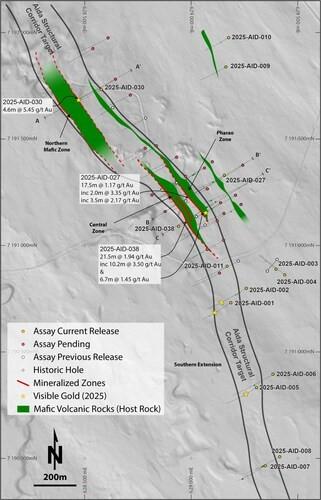
Figure 1: Plan map of the 2025 Aida drill program with mafic host units outlined within the Aida shear corridor. (CNW Group/First Nordic Metals Corp.)

Figure 2: Section C-C’. Cross section through the Central and Pharao Zones of Aida, with the discovery hole (PAU21003), and hole 2025-AID-038 with 21.5 m @ 1.94 g/t Au in the Central structure to the west, and a truncated intercept of 6.7 m @ 1.45 g/t Au in the new Pharao structure in the lower centre of the figure. (CNW Group/First Nordic Metals Corp.)
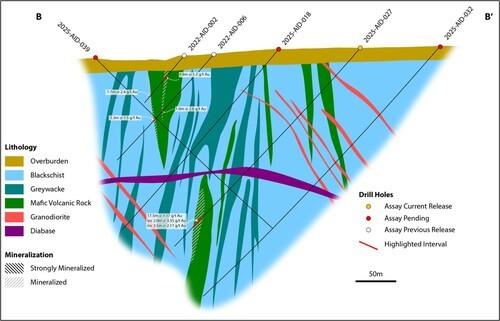
Figure 3: Section B-B’. Cross section through the Central and Pharao Zones of Aida about 100 m north of the discovery hole (PAU21003). Hole 2025-AID-027 intercepts 17.5 m @ 1.17 g/t Au in the newly identified Pharao Zone. Assay results are pending for holes 2025-AID-018, 032 and 03. (CNW Group/First Nordic Metals Corp.)
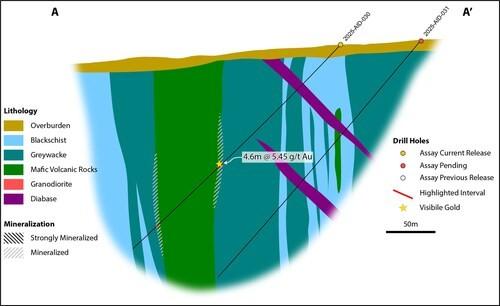
Figure 4: Section A-A’. Hole 2025-AID-030 intersecting 88 m of mafic rocks with ore grade mineralization along the edges and abundant anomalous gold values throughout the intersection. This mafic unit is not constrained down dip or along strike. (CNW Group/First Nordic Metals Corp.)
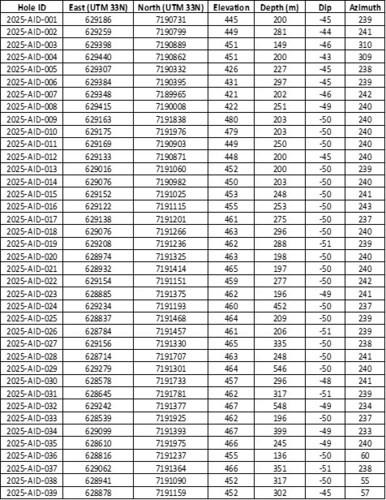
Table 1: Drill hole information (all holes, current release and pending). (CNW Group/First Nordic Metals Corp.)

Table 2: Significant intercepts from drill holes received to date (14 total holes) (CNW Group/First Nordic Metals Corp.)
MORE or "UNCATEGORIZED"
Kuya Silver Confirms High-Grade Silver-Gold Vein Mineralization at Umm-Hadid with Initial Drill Results up to 1483.9 g/t AgEq over 2 Metres
Kuya Silver Corporation (CSE: KUYA) (OTCQB: KUYAF) (FSE: 6MR1) is... READ MORE
First Phosphate Closes Final Tranche of Oversubscribed Private Placement
First Phosphate Corp. (CSE: PHOS) (OTCQX: FRSPF) (FSE: KD0) is... READ MORE
GFG Receives Final Payment from the Sale of its Rattlesnake Hills Gold Project
GFG Resources Inc. (TSX-V: GFG) (OTCQB: GFGSF) announces that i... READ MORE
Goliath Receives $1,730,882 Through Warrant Exercises, Inclusive Of Crescat Capital A Longtime Strategic And Cornerstone Shareholder
Goliath Resources Limited (TSX-V: GOT) (OTCQB: GOTRF) (FSE: B4IF)... READ MORE
Robex Pours First Gold at Kiniéro on Schedule and Budget
Highlights: Gold bar weighing 2.64 kilograms (85 oz) poured in th... READ MORE












